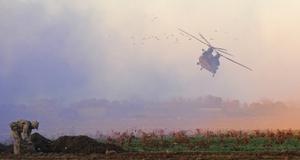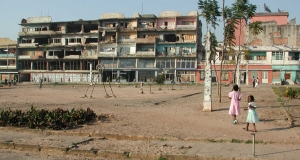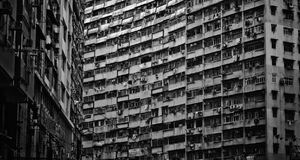Corruption and Graft in Post-Conflict Afghanistan
By
2015, Vol. 7 No. 07 | pg. 1/4 | »
IN THIS ARTICLE
KEYWORDS
With the departure of international forces and the exit of Hamid Karzai, Afghanistan has entered a new age. While Afghanistan’s GDP has quintupled to $20 billion since 2002, the war-torn country remains one of the world’s most impoverished, insecure and corrupt nations. The poverty rate has remained close to 36% since 2012 and Transparency International ranked Afghanistan as the world’s third most corrupt nation in 2014 ("World Development Indicators ," 2014; “Corruption by Country/Territory,” 2014). Fully 61% of people polled reported paying a bribe, and 34% of them said they were extremely confident the bribe would help them obtain a service “Global Corruption Barometer 2013: Afghanistan,” 2014). The number of adults who paid a bribe increased by 25% between 2012 and 2014 with an estimated $1.9 billion dollars paid in bribes in 2014 (“Global Corruption”). Creating a stable security situation is still the highest priority for Afghanistan, but if the country is to more effectively govern and use taxpayer money and the billions in aid it receives from foreign countries, it simultaneously needs to tackle corruption. This paper takes a critical look at the types of corruption that plague Afghanistan’s police force, judiciary and bureaucracy. It explores the consequences corruption has had on the country’s economic development and the potential causes behind this corruption, including a protracted civil war with the Taliban and a dearth of sociopolitical and civil society institutions to monitor corruption. Finally, some policy recommendations are offered, which include revamping anti-corruption strategies in the civil service, judiciary and police force; building institutional capacity through targeted, conditional aid; and increasing participation of the Afghan people and civil society. Extensive Corruption at All LevelsWhat is extremely disconcerting about corruption in Afghanistan is not simply the number or value of bribes that take place; instead, it is the endemic nature of corruption within the Afghan government. Corruption occurs in all branches of government at nearly all levels. Finding actionable solutions to ameliorate corruption within the Afghan government thus requires an exact understanding of where and to what extent corruption occurs. This will require a look at corrupt activities within major governmental agencies including Afghanistan’s law enforcement (police force), law interpretation (the courts) and law implementation (civil service) divisions.Understanding levels of corruption in other institutions, such as electoral or the private sector, might also prove useful, but the former three are crucial in building the rule of law and enforcing the law itself. While corruption in Afghanistan is not limited to public officials, limiting the scope of this paper’s analysis of corruption to the use of a public office for private gain will allow for a deeper analysis and more tangible policy solutions. The most common types of corrupt behavior within Afghanistan are (Zyck, 2012, pg. 7):
Afghan National Police and Law Enforcement GraftA corollary to the Afghan National Army (ANA) and Afghan National Security Forces (ANSF), the Afghan National Police (ANP) was developed to “defend independence, national sovereignty, territorial integrity and attain the security and defense capability of the country,” (Legon, 2009). The ANP has made considerable progress in providing more of a policing function to Afghan citizens and has grown considerably in size (now at 157,000 members) but continues to face significant capability problems that are significantly exacerbated by extensive corruption. In 2014, Transparency International reported that 51% of Afghans had paid a bribe to a member of the ANP (“Global Corruption,” 2014). On a daily basis, police officers extort goods from shopkeepers, levy taxes on vehicles at highway checkpoints, and impose fines on individuals unable to produce proper identification documents (Legon, 2009). Particularly concerning is that some officers turn a blind eye to or even collude with criminals and insurgents. Some mid- to high-level officials in the ANP collaborate with criminals in smuggling, kidnapping for ransom and other illegal activities, collecting thousands of dollars in the process (Braithwaite & Wardak, 2012, pg. 8-14). But corruption within the ANP is not limited to bribery; ANP chiefs have siphoned millions of dollars from international donors to their own pockets. Since 2002, the U.S. government has provided more than $15 billion to equip, train and support the ANP, contributing close to $1.3 billion in 2014 (Sopko, 2014). The United States and other international donors transfer this money to the Law and Order Trust Fund for Afghanistan (LOTFA), which is overseen by the United Nations Development Programme (UNDP) and implemented by the Afghanistan Ministry of the Interior (MOI). When conducting a review of LOTFA, the UNDP found that “internal controls, governance and risk management processes were either not established or functioning…[seriously compromising] the achievement of [its] overall objectives,” (Audit of UNDP Afghanistan, 2015, pg. i). The report indicated the Monitoring Agent (LOTFA) spent an estimated $70 million on food and $23.9 million on ineligible payroll payments in 2014 (Audit of UNDP). The primary reason for this was inaccurate personnel and payroll data. While the MOI and LOTFA are tasked with providing accurate information, current ANP personnel and payroll processes “continue to exhibit extensive internal control deficiencies…such as irreconcilable and unverifiable data, a lack of data reconciliation procedures and difficulties implementing electronic systems,” (Sopko, 2015, pg. ii). Allowing police chiefs to create “ghost agents,” LOTFA’s ineffective monitoring and payment agents foster corruption and waste millions of dollars. Depleting LOTFA funds also reduces the pay that traditional rank-and-file officers receive, pushing more and more ANP officials into taking bribes in order to make ends meet. Thus, both decentralized and centralized corruption beleaguer the ANP: Local law enforcement takes bribes and colludes with criminals, and higher-level officials misuse international aid. Addressing corruption within the ANP will require a multi-faceted solution, as will tackling corruption within the judiciary. Crooked Courts: Corruption Plaguing the Afghan JudiciaryWhile corruption within the ANP hurts the government of Afghanistan’s ability to enforce rules, an inept and corrupt court system prevents it from establishing a firm rule of law. As a prerequisite to tackling corruption, courts ought to have the capacity to detect and prosecute cases of corruption. Unfortunately, Afghans see the courts as the country’s most corrupt institution: in 2013, 65% of Afghans paid a bribe to a judge and 65% viewed the judiciary as corrupt (“Global Corruption,” 2014). According to the 2004 Constitution, the Afghan judiciary consists of primary courts, courts of appeals and the Supreme Court. Using a combination of customary tribal law and secular elements of Sharia Afghanistan’s courts use the 2004 Constitution and a combination of their own rules and regulations. In terms of appointment, the President appoints nine Supreme Court Justices for 10-year terms, and his/her selections are confirmed by the Wolesi Jirga (Afghanistan’s House of Representatives) (Greenman, 2013, pg. 696-697). The courts are marred with corruption in a variety of areas. First and foremost, interviews with current and former judges indicate that the judicial appointment process is strongly influenced by third-party groups, including armed insurgents and warlords. These judges – who make up close to 80% of the judiciary – are appointed in under-the-table deals, extremely unqualified, and often make biased decisions (Chene, 2012). Judicial corruption is endemic and affects nearly every part of the court proceedings. From granting judicial access and selecting the deposition of cases to extorting money from defendants for favorable decisions, corrupt justices are able to line their pockets with hundreds of thousands of dollars in bribes (Chene). Antonio De Lauri (2013) conducted several interviews with local Afghans in Kabul, and found that most people had lost their lawsuits because the opposing party had bribed the judge. He also found that judges and prosecutors routinely accepted bribes in exchange for not processing cases, making evidence disappear and even fabricating it to imprison specific individuals (Lauri, 2013). A lack of oversight by the other branches of government or outside agencies lets the judicial branch remain unfettered and leaves judges to do what they wish, while the Supreme Court lacks any sort of transparency in its discipline and judge removal proceedings (Greenman, 2013). Thus the Supreme Court, despite its significant authority, regulates lower courts with minimal oversight, fostering a dangerous culture of corruption. It is important to note that the courts not only create the rule of law, but that they also oversee the corruption cases for other parts of government. They set the tone for and propagate certain narratives about graft. These narratives permeate judicial discourse; judges adjudicate what is corrupt and not corrupt (Lauri, 2013). Similarly, members of the civil service directly engage with individual Afghans and distribute governmental benefits and foreign assistance. Plagued by corruption, Afghanistan’s civil service fails to actualize on domestic and international goals of rebuilding Afghanistan, wasting billions of dollars in the process. Corrupt Tendencies Within the BureaucracyEven though they perform better than the ANP and the courts, Afghanistan’s bureaucrats fail to meet international standards when it comes to corruption. 43% of Afghans in 2013 perceived civil servants and bureaucrats to be corrupt, with 58% of people indicating they paid a bribe to Registry and Permit Services, 44% to Tax Revenue and 40% to Land Services (“Global Corruption,” 2014). 50% of Afghans reported paying a bribe to customs officials in 2012 (“Global Corruption”). Corruption pervades nearly every aspect of Afghanistan’s civil service. A recent SIGAR report estimated that more than half of Afghanistan’s annual customs review is lost to graft (Sopko, 2014). Graft also plagues the recruitment process. 52% of Afghan households have at least one member who applied for a public sector job, and 45% of all such households paid a bribe to help them secure their position (Corruption in Afghanistan: Bribery as Reported by the Victims, 2010). This spread of corruption extends to the upper echelon of Afghanistan’s political landscape. During the early years of Karzai’s regime, an extensive network of political elites and Karzai cronies placed themselves as intermediaries between ordinary Afghans and international donors and officials. As a result, they were able to divert billions of dollars of foreign aid to their (and their allies’) pockets (Goodman & Sutton, 2015). One of the better-known examples of such graft was the near-collapse of the Kabul Bank, which institutionalized fraud by allowing individuals in President Karzai’s inner circle to siphon aid money from depositors. Investigators found that they stole $900 million of foreign aid (Rosenberg, 2012). Economic and Sociopolitical Costs of Widespread GraftRebuilding Afghanistan is no easy task, and corruption makes it that much harder. A recent report indicates that as much as $1 billion of the $8 billion given to Afghanistan in the past eight years has been lost to corruption, significantly hampering Afghanistan’s development (Labelle, 2012). Even worse, corruption creates systemic issues that institutionally hamper Afghanistan’s economic development and negatively impact its security environment. Corruption acts as a hindrance to economic growth, misallocates talent (since the most qualified individuals do not always receive government positions), diminishes the efficacy of foreign aid and assistance, reduces tax revenue and hurts public infrastructure (Mauro, 1997). Endemic corruption undermines the effectiveness of governance and hurts private sector growth as a result. Here, civil servants that take bribes from companies in exchange for licenses levy extra cost on companies with no benefit to the general public. This negatively impacts private sector development while the public experiences a net loss (Rose-Ackerman, 1999). Not only do companies that want to start business in Afghanistan have to pay high costs to protect investors, but also paying bribes becomes almost essential to get proper construction permits, access electricity and successfully complete registration (Doing Business 2013: Smarter Regulations for Small and Medium-sized Companies, 2013, 30-35). Alternatively, a bureaucrat who controls the quantity of services available could distribute less or more than the officially sanctioned level (Rose-Ackerman, 1999, pg. 17). The latter case is much more common in Afghanistan, especially at lower levels. For instance, 27 signatures are required in order to register a vehicle and obtain a driver’s license, but a simple bribe of $180 will get you past all the bureaucratic hurdles (Gebauer and Volkery 2010). As Rose-Ackerman (1999) states, “the greater the discretion of officials and the fewer options open to firms…the higher costs of a system that condones corruption,” (pg. 27-28). Some scholars have attempted to create models that pinpoint the specific economic costs of corruption, but the task is extremely difficult. Kwabena Gyimah-Brempong’s (2002) empirical studies – studying the effects of corruption – indicate that corruption decreases a country’s growth rate and increases the inequality of wealth distribution (pg. 183-209). Bryan Coleman (2011) applied Gyimah-Brempong’s model to Afghanistan. Using Afghanistan’s CPI score and GDP growth rate from 2005 to 2010, Coleman concluded that corruption reduced Afghanistan’s GDP growth rate by 87% over that time period (pg. 87). Since CPI is based on perceived corruption and Gyimah-Brempong’s model was created for African states, Coleman’s analysis is by no means exact but nonetheless suggests major negative implications for Afghanistan’s economic development. Aside from its effect on the economy, rampant corruption leads to further deterioration of Afghanistan’s precarious security environment by fostering an ineffective police force, siphoning money to the Taliban and reducing faith in governance. As mentioned before, corruption has crippled the ANP’s capability to secure Afghanistan’s cities and neighborhoods. This simultaneously increases the likelihood of crime and the probability of intrusion of non-state actors (the Taliban, militia groups) into the daily life of Afghans. Even more troubling is that the Department of Defense has lost track of over 200,000 weapons given to the ANSF and ANP (Sopko, 2014, pg. 6-9). Several reports indicate that Afghan police and security forces have sold their weapons and ammunition to the Taliban itself. One senior Afghan official validated this claim, indicating, “the reality is that they sell their bullets and weapons in the market to the highest bidder and that sometimes includes [the] Taliban or other insurgent groups,” (Sarwary, 2012). In other cases, police officers have alerted Taliban leaders of impending operations (Goldstein, 2015). Most of all, corruption has significantly undermined Afghans’ faith in their government, forcing them to turn to non-state actors. Especially in rural areas, many Afghans view the ANP as predatory and look to warlords and armed opposition groups for security (Laub, 2014). Judicial malfeasance also forces many rural Afghans to look elsewhere for justice. According to an Integrity Watch Afghanistan survey, 60% of Afghans indicated they took judicial matters to non-state actors ("Afghan Perceptions and Experiences of Corruption: Main Findings," 2010). Albeit brutal, the Taliban’s extensive judicial apparatus fairly solves disputes without taking bribes (Giustozzi, Franco, and Baczko, 2013, pg. 27). In summary, corruption has compromised Afghanistan’s economic capabilities and impeded its ability to create a stable security environment. Even if the country’s government completely eliminated its issues with graft, Afghanistan’s economic and security problems would not be solved. It still faces a viable Taliban threat, relies heavily on international donors and still lacks effective public institutions. However, reducing corruption will allow international forces and the Afghan government to better address both of these concerns and improve the quality of life of citizens. Contextualizing the corruption problems that plague Afghanistan with their root causes will be important to create more applicable policy solutions.Continued on Next Page » Suggested Reading from Inquiries Journal
Inquiries Journal provides undergraduate and graduate students around the world a platform for the wide dissemination of academic work over a range of core disciplines. Representing the work of students from hundreds of institutions around the globe, Inquiries Journal's large database of academic articles is completely free. Learn more | Blog | Submit Latest in Political Science |


















